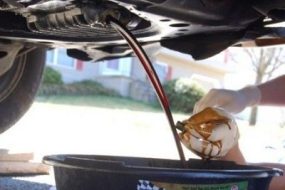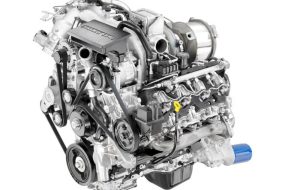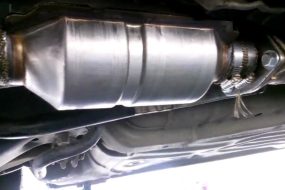
At least once in the life span of a car, there will be a need to jumpstart it. The need to jumpstart the car could be a result of a flat battery, a major problem in the car, or a bad alternator.
Whatever the reason may be, jumpstarting may be the last option to get the car running. After jumping car how long should it run?
After jumping a car, you should allow it to run for at least 30 minutes to give the car enough time to recharge.
When Should You Jumpstart a Car?
Jumpstarting a car is usually done when the car isn’t starting on its own as a result of a faulty battery, bad alternator, or some other problems in the car. It is necessary to jumpstart a car in order to get it running and probably have the problem fixed.
The process of jumpstarting requires the use of an external source to boost a car’s battery long enough for the battery to recharge and start the engine.
In most cases, when all else has failed in trying to start the car, it will be a jumpstart.
After Jumping Car How Long Should It Run?
How long the car should be allowed to run after jumping depends on the condition of the battery and alternator. If both alternator and battery are in good condition then you can run the car for a minimum of 30 minutes after jumping it.
Allowing it to run for this length of time gives it enough time to charge and reduces its chances of dying on you again.
However, if both or one of the battery and alternator isn’t in a good condition, you should let it run for a minimum of 15 minutes at 2000rpm.
In the case where the alternator is damaged, no amount of charging, in fact, there will be no charging because the alternator is responsible for recharging a battery when it’s running.
All that can happen here is you making good use of the limited power present in the battery to get the car to an auto repair shop.
Whatever the case may be, giving the car time to charge after jumping can be done either by driving the car or just leaving it to run and charge. You should bear in mind that the battery will charge fast when you are driving around.
How to Jumpstart a Car
Dealing with a flat/dead battery or the car refusing to start? Then the best option at the time may be to jumpstart the car in order to get some power in it. To do this you will need to get jumper cables with access to another car.
Let’s look at some steps to rightly jumpstarting a car:
Find the Battery Location in the Two Cars
Locating the battery in both cars should be easy as they will be most likely located under the bonnet or elsewhere. If you’re not sure where to look, check the owner’s manual.
Once you have located them, check to see that they are both in good condition, if otherwise, don’t go ahead.
Put Both Cars in Position
Both cars should be close enough so the jumper cable can reach both batteries but not too close for the cars to touch each other. Be sure to put the cars in neutral or park as the case may be.
Attach the Jumper Leads
Follow these steps to attach the leads;
- One end of the red positive jumper lead should be clamped to the positive part of the dead battery.
- The other end of the red positive lead should be clamped to the good battery.
- One end of the black negative jumper lead should be attached to the negative terminal of the good battery.
- While the other end of the black negative jumper lead should be attached to the unpainted, clean metal on the dead car’s engine block.
- No connection should be made with the negative terminal of the dead battery.
Extra care should be taken when this process is ongoing as the slightest mistake or wrong connection could lead to more serious problems like a physical injury.
Start the Dead Car
To start the dead car, you’ll need to start the good car and allow it to run for some minutes. While the good car is running, the dead car’s battery is being charged.
The Jumper Lead Should be Removed
Care should be taken when removing the jumper cables or jumper lead, it should be removed in the exact reverse of how it was attached.
The end of the black negative cable attached to the dead car metal should be removed first, then the end attached to the negative terminal of the good battery comes next.
After the negative has been removed, you proceed to remove the red positive attached to the good battery, and finally, you remove the red positive lead attached to the dead battery.
Drive the Car You Just Revived
There is a need for you to drive the revived car or leave it to run for some minutes, this should be done in order to recharge and allow the battery to charge fully.
Benefits of Jumpstarting a Car
Having to deal with a flat battery can be frustrating especially if you are out on the road but having a jumper cable and being able to jump-start your car is one less thing to worry about. Here are some of the benefits of jumpstarting a car.
- You Don’t Have to Deal With a Dead Car for Long: Being able to jumpstart one’s car means you do not have to deal with a dead car for long, you can get your car up and running in no time. With jumpstarting, you can easily recharge the car’s battery afterward and you are good to go.
- You Don’t Have to be Stranded: Getting stranded especially in the middle of nowhere can get one worried. If your car shuts off while you are on the go and the problem has been traced to a flat battery, you can easily jump-start the car and get it working in no time without getting stranded. With the necessary device at hand, you are good to go.
- No Need to Spend Extra: Jumpstarting a car does not necessarily mean there’s a problem with any part of the car, it could be because the car has been idling for a long time. If you are able to jumpstart your car, you do not need to spend extra in the auto shop.
Conclusion
You should note that jumpstarting may not really be ideal for more modern cars because of their improved electronic system. Also, if you have to jumpstart a car multiple times before it starts you may need to have it checked out.









